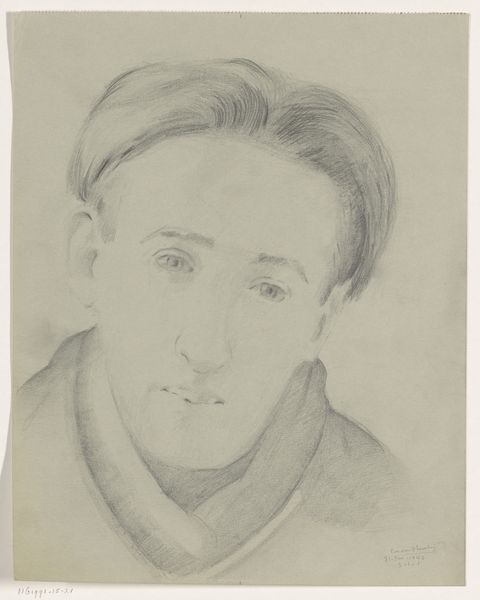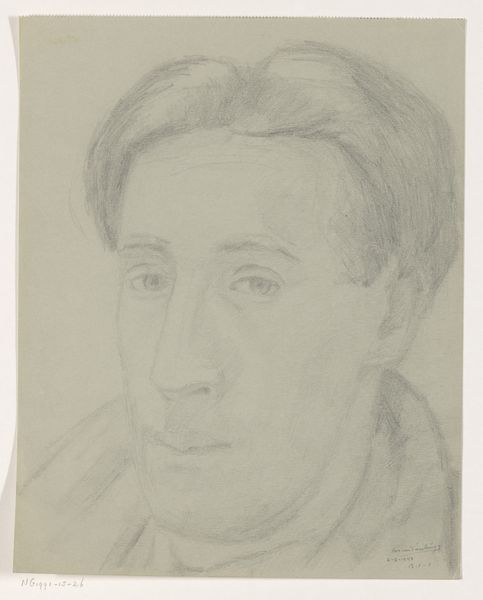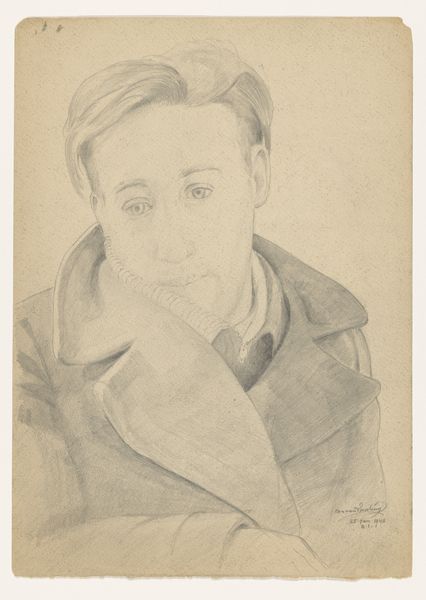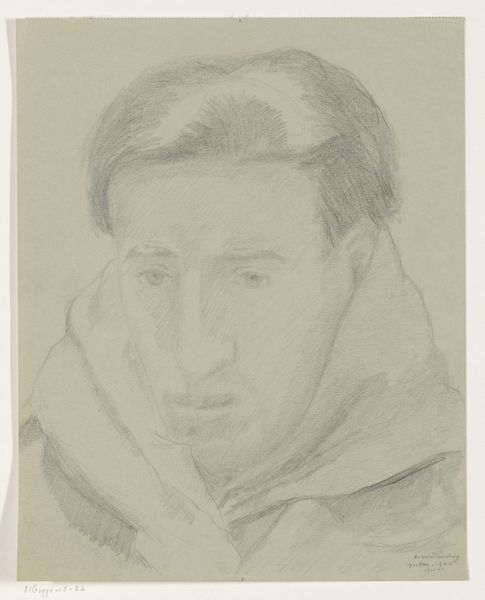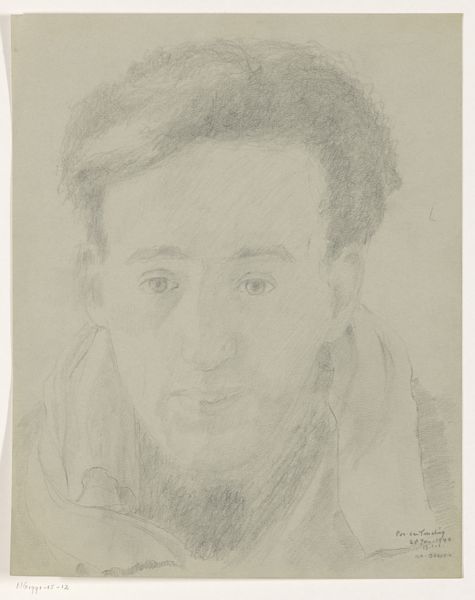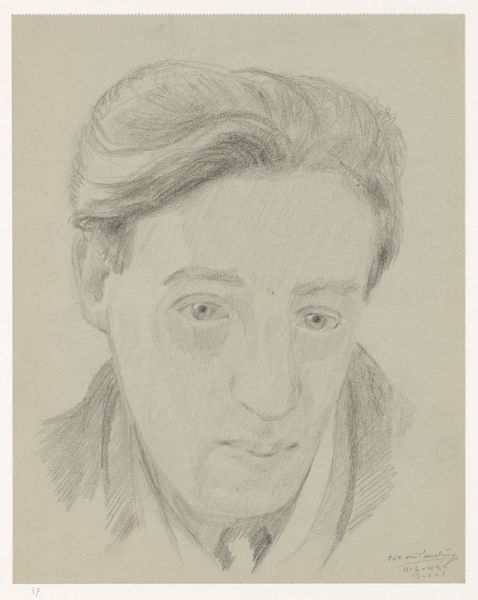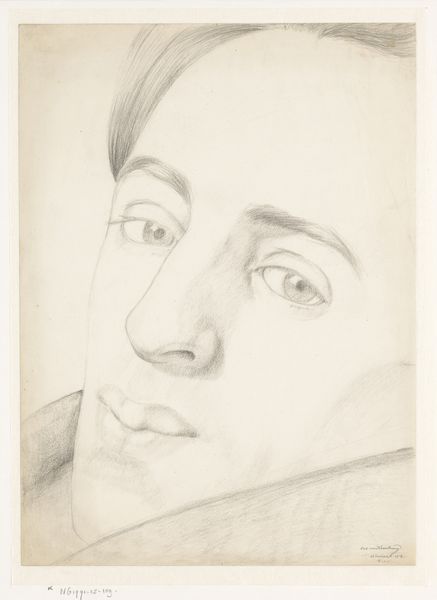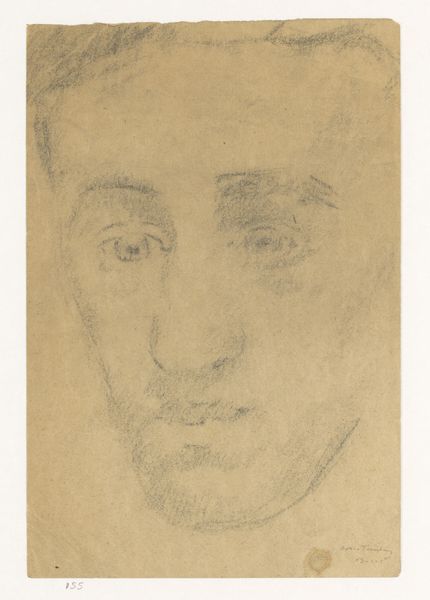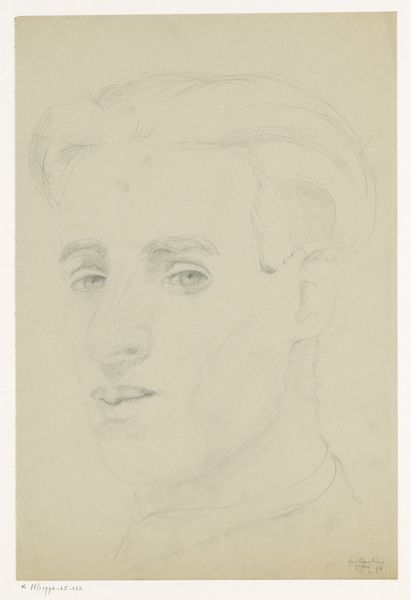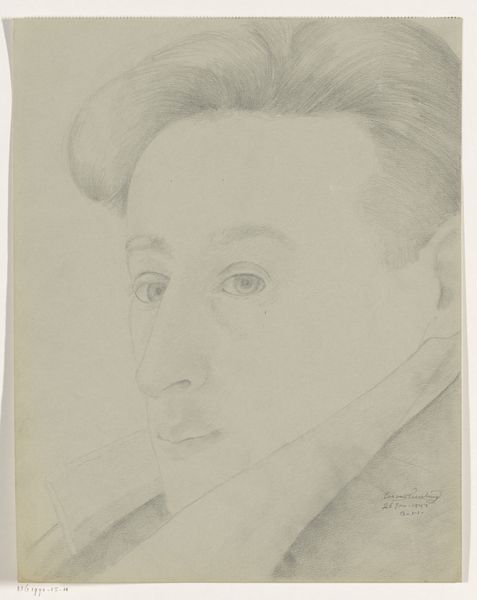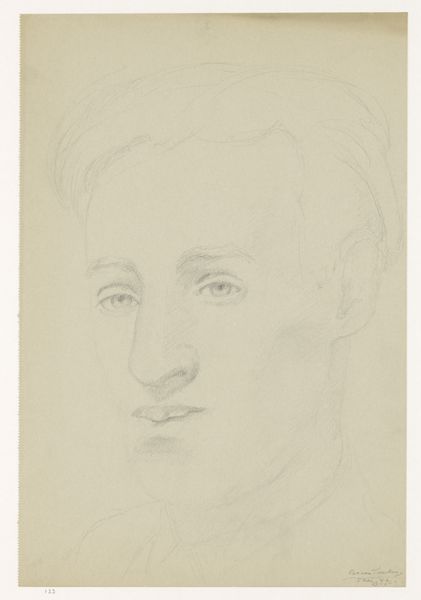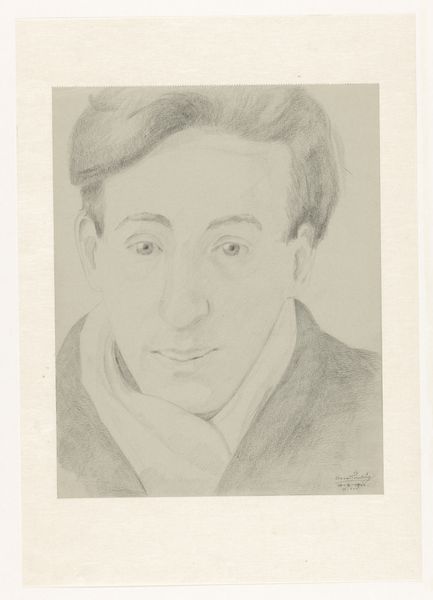
drawing, pencil
portrait
drawing
self-portrait
pencil drawing
pencil
portrait drawing
realism
Dimensions: height 31.0 cm, width 24.5 cm
Copyright: Rijks Museum: Open Domain
Curator: Before us is a self-portrait by Cor van Teeseling, entitled “Self-portrait: B-1-1, February 8th”. It’s dated possibly to 1942 and rendered in pencil. What’s your initial impression? Editor: Haunting. It's a face that seems to emerge from the paper, softly drawn yet with these penetrating eyes. It feels incredibly intimate, like catching a glimpse of the artist’s inner world. Curator: Indeed. Looking at this work, especially given its date, I consider the environment in which van Teeseling was creating. As the Netherlands suffered through the Second World War and Nazi occupation, art and its creation became even more entwined with social identity, resistance, and perhaps quiet defiance. Editor: I agree. Those eyes... they seem to hold a deep knowing, perhaps weariness. The slight downturn of the mouth, the way the hands are clasped, it speaks of contemplation and introspection. Pencil, in its subtlety, further adds to the overall sense of subdued emotion. Do you find any iconographic clues of his experience? Curator: Precisely. The medium is humble. Its accessibility would have allowed continued creation in secrecy during difficult times. Consider the historical context: Artists were forced to navigate censorship, forced collaboration, and existential threats. Therefore, such artworks potentially bear witness to history. The act of drawing itself could have become a subversive act. Editor: Absolutely. And self-portraits, even more so, were assertions of selfhood in a period that sought to strip away individual identities. This could explain the focus on the eyes; for many cultures they’re mirrors of the soul. To capture them is to insist on his personhood, resistance to external powers aiming to destroy that. Curator: This pencil drawing and this perspective reminds us that art made during those times may also hold complexities around complicity, resistance, and survival. And how institutions and individuals interpreted, collected, or suppressed art contributes further to how this work lives on to today. Editor: What’s powerful is how immediate it feels, how a simple medium can carry so much. As you mentioned earlier, we viewers find ourselves face to face with the artist and can participate with his lived experience in a way that perhaps reflects on how art allows memory and experience to outlive one individual’s lifespan. Curator: It makes one ponder about what can be preserved from history and how each portrait subtly asserts an individual experience during this historic period. Editor: It’s a reminder that symbolism and emotions reside even in the simplest form.
Comments
No comments
Be the first to comment and join the conversation on the ultimate creative platform.
